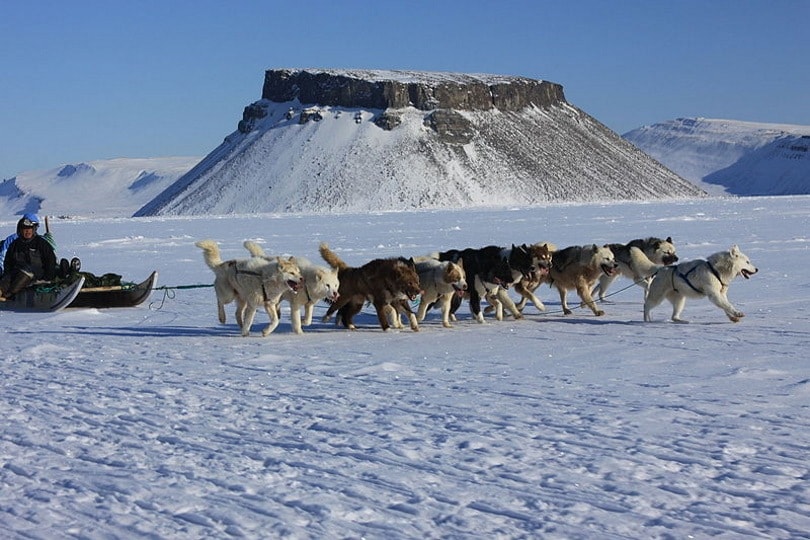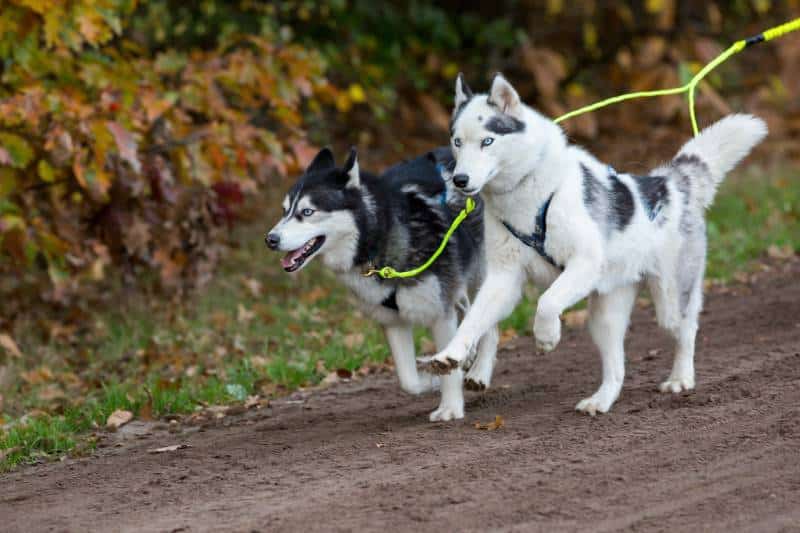If you’ve ever been captivated by the fascinating world of sled dog racing, then you’ve probably wondered what it takes to train these incredible animals. Well, look no further as we unveil the secrets to mastering the art of sled dog training. In this article, we’ll equip you with some essential tips that’ll help you forge a strong bond with your team of four-legged athletes and unlock their true potential. So, let’s take a look at how to train your dogs to become amazing sled dogs.
By understanding the unique characteristics of each sled dog breed, you can tailor your training methods to suit their individual needs and maximize their potential. This will help you build a stronger bond with your team and ensure their overall well-being and success on the trail.

The 12 Tips on How to Train a Sled Dog
1. Establish Leadership With Your Sled Dog
In order to have a successful sled dog team, it’s important to establish a strong sense of leadership (and trust) with your dogs. Dogs are pack animals by nature and look to their leader for guidance and direction. By establishing yourself as a confident and reliable leader, you can build a stronger bond with your team and ensure their cooperation and obedience.
2. Consistent Discipline
One of the most effective ways to establish leadership with your sled dogs is through consistent and fair discipline. Dogs thrive on clear boundaries and expectations, so it’s important to set and enforce rules consistently. This can be done through positive feedback, such as rewarding good behavior with praise and treats, and discouraging unwanted behaviors through verbal commands and physical cues.


3. Establish Effective Communication
Consistent and effective communication is also key to establishing trust and leadership with your sled dogs. Dogs are highly attuned to body language and vocal cues, so it’s important to use clear and consistent signals to convey your expectations. This can be achieved through training sessions that focus on teaching your dogs basic commands, such as “go,” “stop,” “left,” and “right.”
By practicing these commands regularly and rewarding your dogs for their correct responses, you can establish a clear line of communication and ensure that your team understands and follows your instructions on the trail.
4. Build Trust
Building trust with your sled dogs is another important aspect of establishing leadership. Trust is built through positive experiences and consistent care. It’s important to spend quality time with your dogs, providing them with regular exercise, affection, and mental stimulation. This not only strengthens the bond between you and your team but also ensures their overall well-being and happiness.
Training a sled dog requires time, patience, and a lot of dedication. Sled dogs are highly intelligent and energetic animals, so it’s important to perform their training with a systematic and consistent approach.


5. Bond With the Dog
First and foremost, it’s crucial to establish a solid bond with your sled dog. This can be achieved through regular interaction, playtime, and positive feedback. Spend time with your dog outside of training, get to know their personality, and build trust. A strong bond will lay the foundation for effective training.
6. Start With Basic Obedience Commands
The next step is to introduce basic obedience commands. Start with simple commands like “heel” and “come.” Use positive reinforcement such as treats or praise to reward your dog when they successfully follow the command. Consistency is key here – repeat the commands daily and gradually increase the difficulty level.


7. Desensitize to Wearing the Harness
Sled dogs need to get used to wearing a specialized harness that allows them to pull while moving freely and without hurting themselves. It is crucial to gradually desensitize them to wearing the harness to create a positive experience with it from day one.
8. Introduce the Sled Dog to Pulling
Once your sled dog has mastered basic obedience, it’s time to introduce them to pulling. The pulling is usually trained by attaching the end of the leash and reinforcing the dog for pulling and creating tension in the leash. It is not complicated, as you can lure the dog with a treat while introducing the cue “pull” and reinforcing them if there is tension on the leash.
Once the behavior is under signal control without the need to show the dog a treat, you can then move to give the signal from behind the dog. If needed, toss a treat in front the first couple of times to get your dog to understand that they should pull in the opposite direction.
9. Teach Them to “Hike”
The cue “mush” or “hike” is used to give your pup an indication that they can start moving. Since walking is a natural behavior for dogs, introducing this cue is easy. If you have access to another sled-trained dog, yours will first naturally follow and then learn to associate the cues.
Training this behavior is not a necessary step, as it should be easy to teach your dog. Remember to reinforce your dog for their attention and prompt responses to your commands.
Once your dog understands the concept of “hike,” you must also teach them a command for “left” and “right.” Choose a consistent cue for these commands to help your dog understand what is expected of them.
10. Teach Them to Stop
Training your sled dog to stop when requested is crucial before venturing on a sled. Practice this behavior while walking your dog on a leash, using cue words like “whoo” or “stop.” Praise and reinforce your dog when they stop promptly, as this is an important safety feature during sledding.
Ensure your dog has a positive response to the stop command before introducing them to the sled.

11. Introduce the Sled
Start with a lightweight sled or cart and attach a harness to your dog. Walk alongside the sled or cart, using verbal cues like “hike” or “mush” to encourage your dog to move. Use the cue “pull” to indicate they should move with tension on the leash. Reward them for exhibiting the desired behavior.
Gradually add weight to the sled or cart as your dog becomes more comfortable pulling. Monitor their physical condition and avoid overloading them.
12. Seek Professional Training
If training your sled dog proves challenging, don’t hesitate to seek professional help. Many sled dogs are professionally trained, and there are resources available for professional sled dog training. Consider reaching out to a professional trainer for assistance with obedience commands and sled pulling.
💛 🐶 Speak To a Vet Online From the Comfort of Your Couch!


If you need to speak with a vet but can’t get to one, head over to PangoVet. It’s an online service where you can talk to a vet online and get the personalized advice you need for your pet — all at an affordable price!

Essential Equipment for Sled Dog Training
Having the right equipment for sled dog training is crucial for the safety and effectiveness of the training. Make sure you have the necessary equipment to communicate and control your team effectively.
1. The Sled
The sled is a key piece of equipment for sled dog training. Traditional wooden sleds and modern lightweight sleds are available, each with its own advantages. Choose a sled that suits your needs and preferences for durability and maneuverability.
2. Harness
Invest in a set of sled dog harnesses designed to distribute pulling force evenly across your dog’s body. Properly fitting harnesses are essential for your dogs’ comfort and safety during sled dog activities. Choose harnesses that provide a snug fit without restricting movement.
Ensure the harnesses you choose are suitable for your dogs’ anatomy and allow for efficient pulling without causing strain or discomfort.
The ability to customize the fit for each individual dog is enhanced by the presence of adjustable straps and buckles. This ensures a secure and comfortable experience for the dog.
In the realm of dog sledding, the gangline plays a crucial role in connecting the sled to the dogs. This lifeline between the musher and the team of dogs must be constructed with strong and durable materials to withstand the immense pulling force exerted by the dogs during their snow races. Regular inspection and maintenance of the gangline are essential to prevent accidents or injuries.
Additional accessories that may be required for sled dog training include booties to protect the dog’s paws, a snub line for securing the sled, and a sled bag for carrying supplies. Investing in high-quality equipment tailored to the needs of sled dog training is vital for the success and safety of the team.
Training a sled dog effectively involves building a strong bond, instilling discipline, and teaching basic commands before introducing them to the sled. With dedication and patience, a sled dog can become a reliable and well-behaved member of the team. The text is missing. Please provide the text you would like me to rewrite.


